Why are firearms such a huge part of our culture?
Thank you for reading this post, don't forget to follow and signup for notifications!
It’s a tough question. From a shooter’s perspective, there are tons of answers. However, history also plays a massive role.
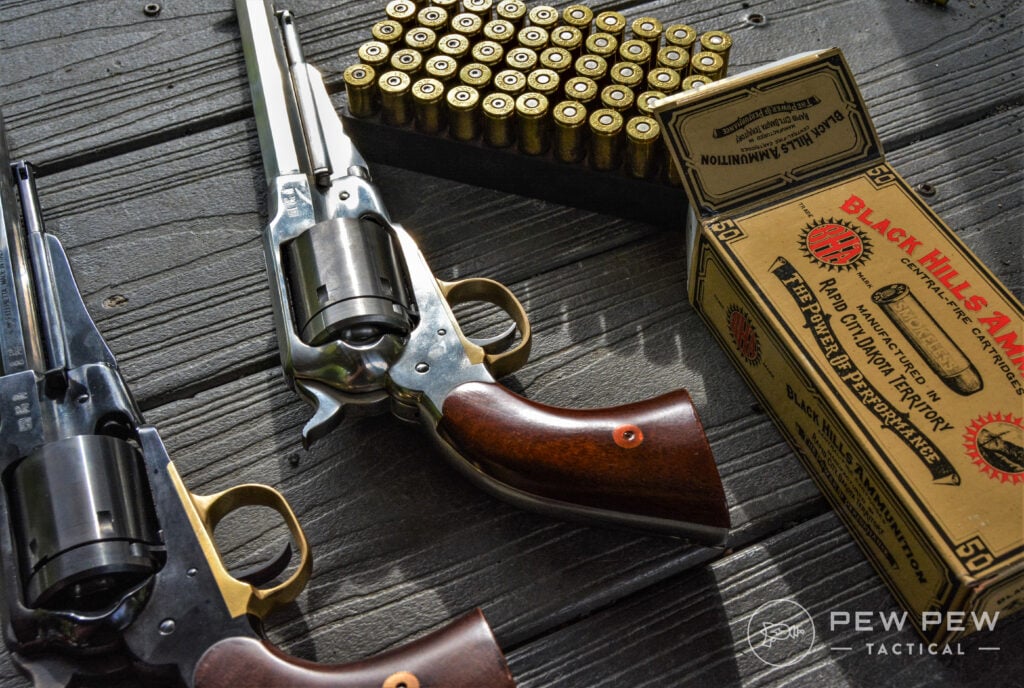
Today, we will be looking at the historical firearm firsts.
To keep it from being a full-blown novel, I’m looking at categories that are most popular in the current world of firearms.

That being said, let’s take a look at some historical milestones in the world of firearms.
Table of Contents
Loading…
The First Gun: Chinese Fire Lance
Where did it all start? Who birthed the firearm industry we enjoy all so much?
The first modern gunnish-style weapon traces itself back to 10th century China.
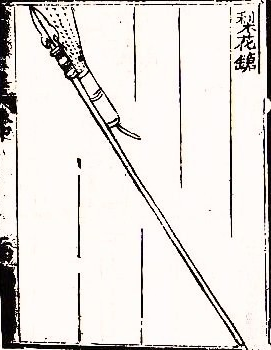
In a bizarre turn, guns were first attached to melee weapons. You know how a bayonet turns a rifle into a spear? Well, the Chinese fire lance did the opposite.
It was a spear with a firearm attached.
They started as pyrotechnic devices used to stun and surprise an enemy. However, as gunpowder improved, they saw a chance to improve its effectiveness.
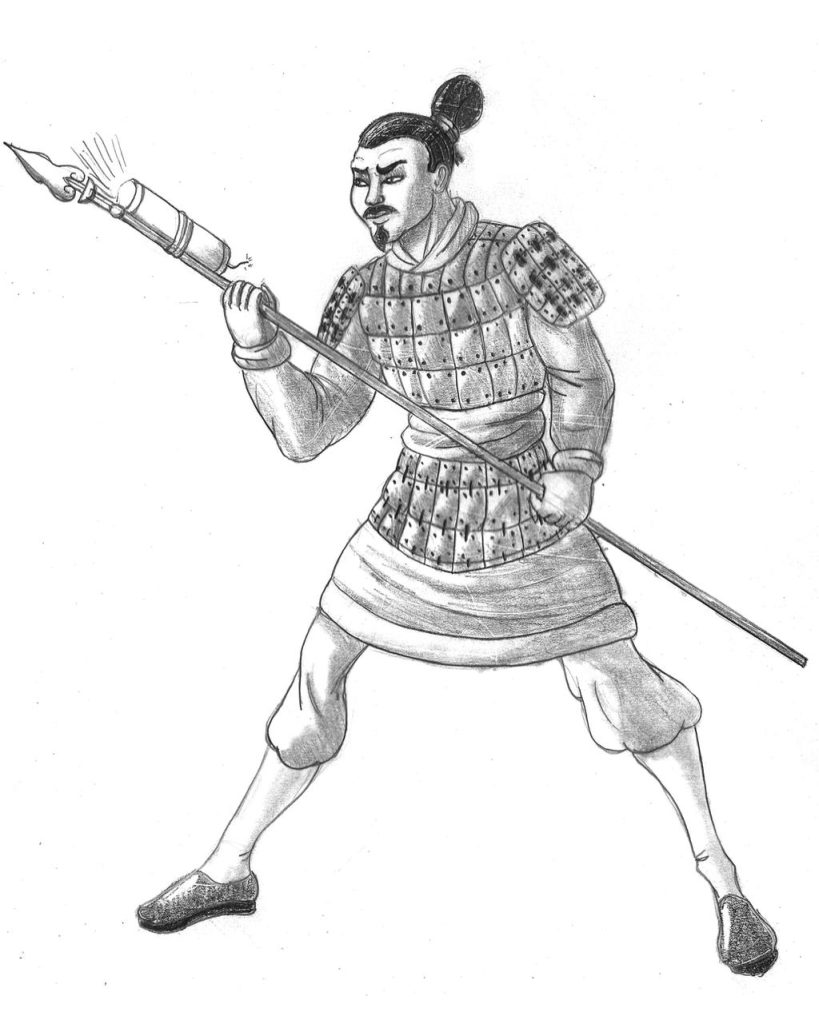
They started loading those devices with pellets and debris to make a very early version of a shotgun. Imagine dodging the blade of a spear just to get zapped by some crazy device at the end of the spear, or a calvary man riding at you and sending a blast of early buckshot to your chest before you can even fight back.
By the 13th century, fire lance barrels were made from metal, eventually leading to the first hand cannons.
The fire lance spread out of China and into Japan, the Middle East, and Europe, where they caught on like wildfire.
First Rifled Rifle: German Rifles by Augustus Kotter
When I say rifle, I am talking about a long gun with a rifled barrel. Smoothbore guns firing a single projectile at this time weren’t known for accuracy.
To get the best accuracy, guns of the time often used a ball that was as close to the same size as the bore as possible.
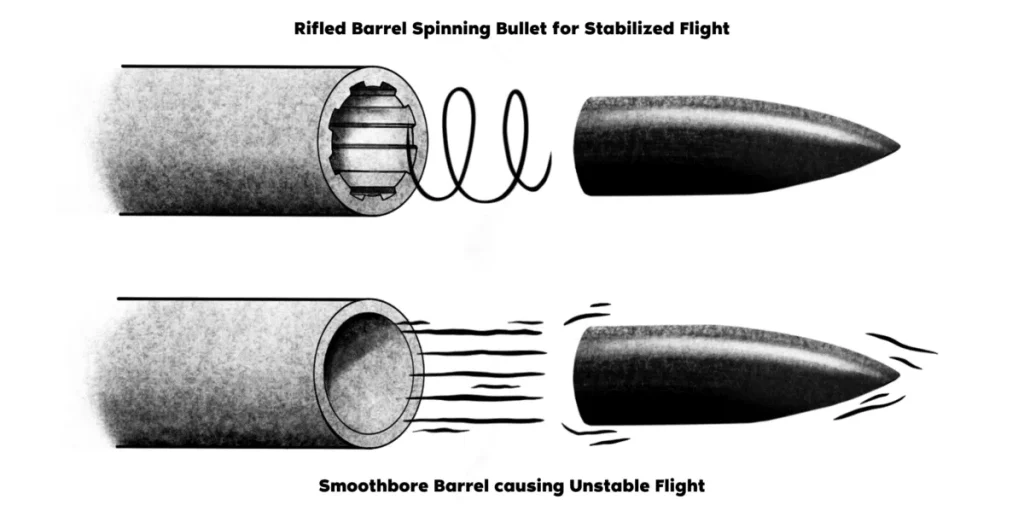
However, in 1498 a man named August Kotter produced the first spiral rifling pattern that would impart spin on the projectile. In 1520 August, Kotter improved on the design.
Even at this time, shooting competitions existed, and men with muskets competed. The rifled bore had such an effect that references exist to banning grooved barrels because such rifles outshot muskets so easily.
Military forces were still using simple muskets for hundreds of years after the invention of rifling, but rifles stuck around for those who could afford them. Due to the higher production costs, rifles made more sense for individual shooters rather than large armies.
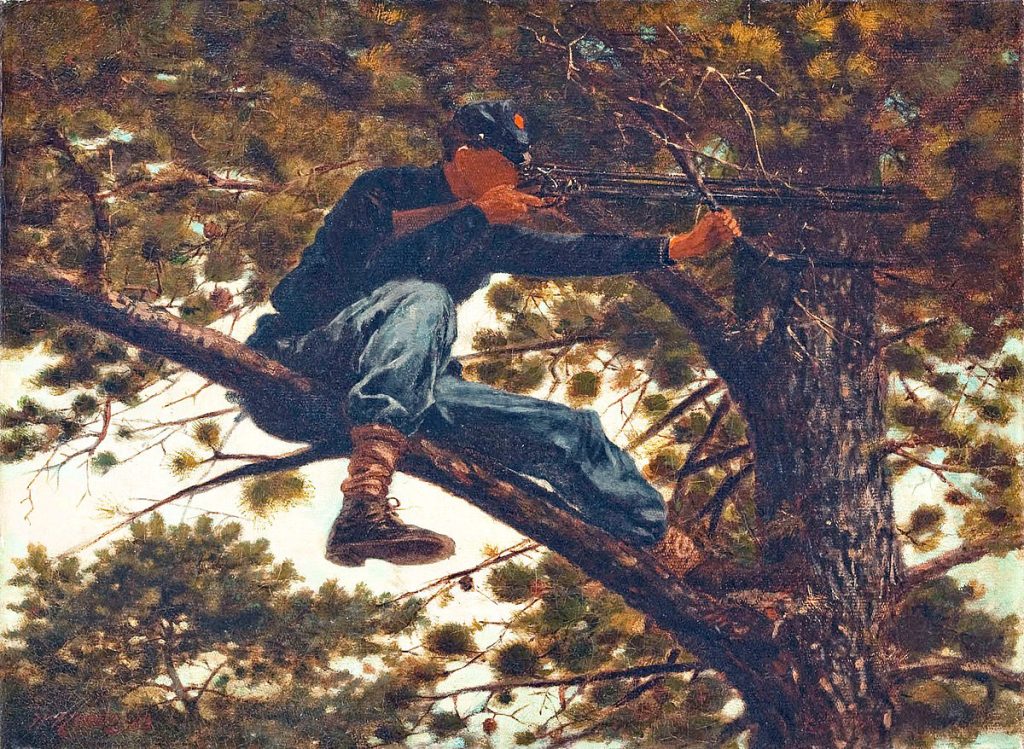
Massed formations also required expedient reloads, and rifled weapons were slower to reload due to tighter tolerances. These large formations firing black powder weapons resulted in a heavy cloud of smoke, making individual aiming difficult anyway.
Additionally, high-volume firing would eventually clog the rifling.
Despite this, there are plenty of examples of limited numbers of rifled firearms being used by sharpshooters in the English Civil War, the Revolutionary War, and dozens of other conflicts.
The First Repeater: Kalthoff Repeater
A repeater is defined as any single barrel weapon capable of multiple discharges between ammunition reloads. Most modern firearms fall under this category.
Semi-automatic rifles and pistols, lever actions, bolt actions, pump actions, and others all qualify as repeaters.

The earliest known repeater comes from the 1630s in the form of the Kalthoff Repeater, designed by members of the Kalthoff family. This early repeater used either a rectangular breech block with multiple chambers or a cylindrical breech block.
Capacity ranged between 6 to 30 shots. Magazines could be positioned in the ramrod position, and powder magazines were often in the stock. A proto-lever action would cause the ball to feed to the chamber and push a charge of black powder behind the projectile and in the priming pan.
The Kalthoff repeater had several different designs that gave the average rifleman a crazy degree of firepower for the eta. However, the weapons were expensive, complex, and slow to manufacture.
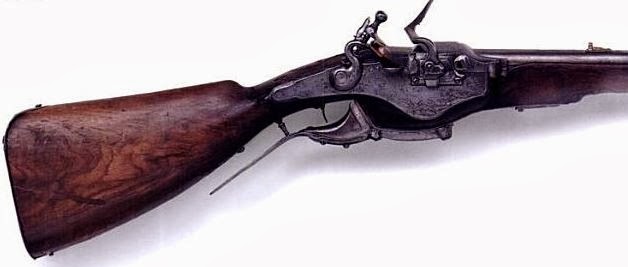
If something broke, it required a special gunsmith to fix it. Fouling would make the lever hard to operate. If the powder got wet, it would clog the magazine and render the weapon unusable until it could be cleaned.
Even so, they were used by the Danish Scanian Guard in small numbers and might have seen some limited action.
First Pump-Action Shotgun: Spencer Roper Model 1882
In the late 1800s, shotguns were primarily single and double-barrel models. These powerful weapons were capable but slow to reload and had limited capacity.
At the time, the firearms world was beginning to revolve around repeating firearms like revolvers and lever actions.
Christopher Spencer and Sylvester Roper teamed up to create the first pump-action shotgun. Roper had previously designed a revolving shotgun, but unfortunately, revolving long guns are notoriously tricky.
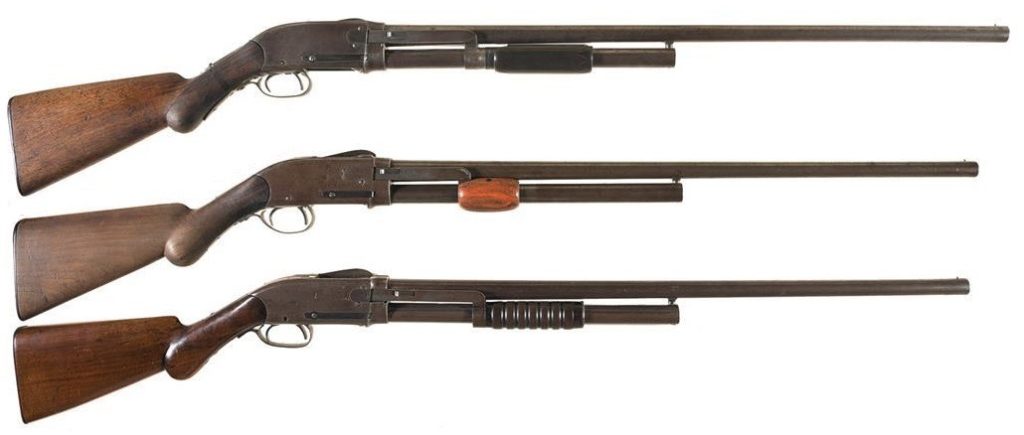
The gun premiered in 12- and 10-gauge and featured a rather complex action.
Actuating the pump dropped the entire breech block below the receiver. This allowed the next shell to enter the action while the previous shell ejected from the barrel.
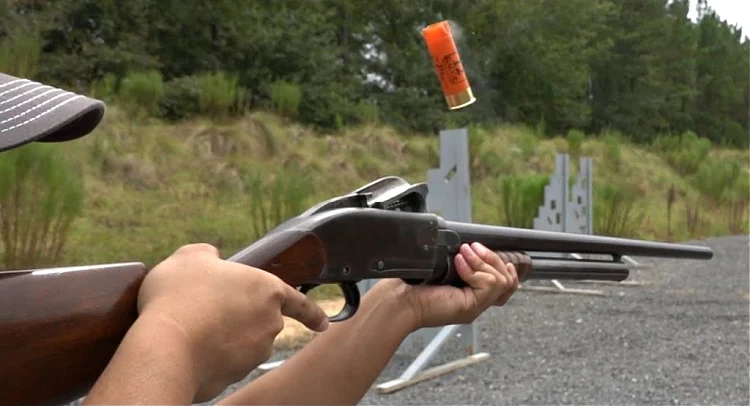
The hammer spur sat in the trigger guard and resembled a second trigger. Spencer Roper shotguns wore super small pumps that are just downright cute. Later models featured larger, more robust pumps.
These guns were reasonably successful, but in 1899 the company declared bankruptcy.
The designs were purchased and produced by a man named Bannerman. However, after Winchester’s advent of the 1893 and later 1897 shotgun, the Spencer Roper faded into obscurity.
First Machine Gun: Maxim Machine Gun
The Maxim machine gun likely made the biggest initial splash of all the weapons on this list. While many of these older guns would go on to influence modern arms design, the Maxim gun changed small arms design completely.
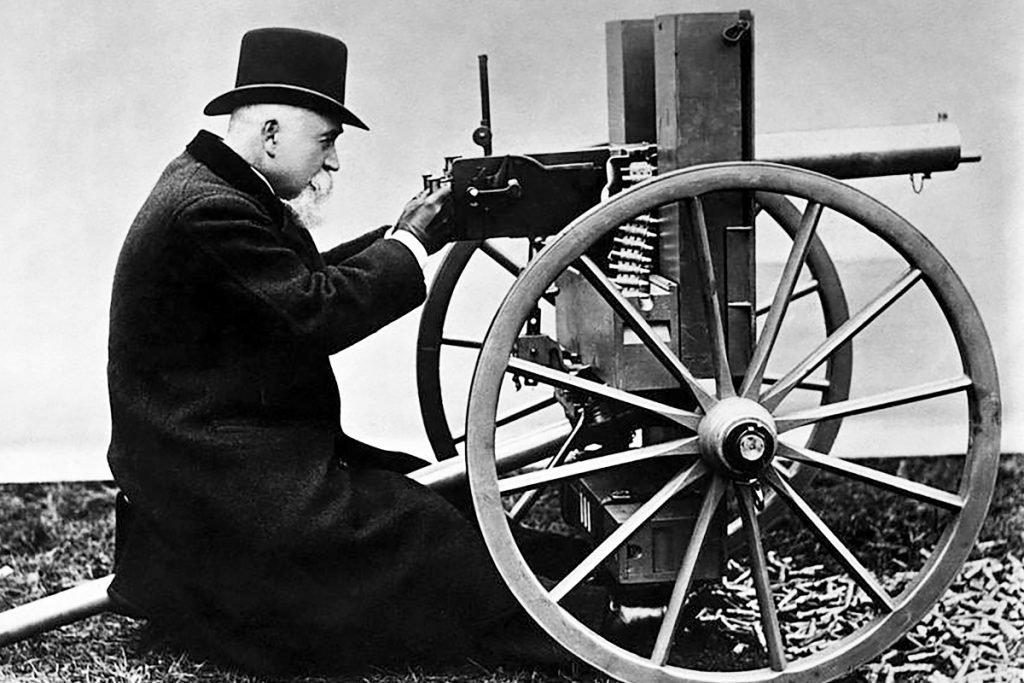
In 1884 Hiram Maxim gave the world the Maxim gun.
It became the first true machine gun and completely changed how wars were fought. During World War I, every side wielded some form of the Maxim gun — mowing down thousands of opposing soldiers.
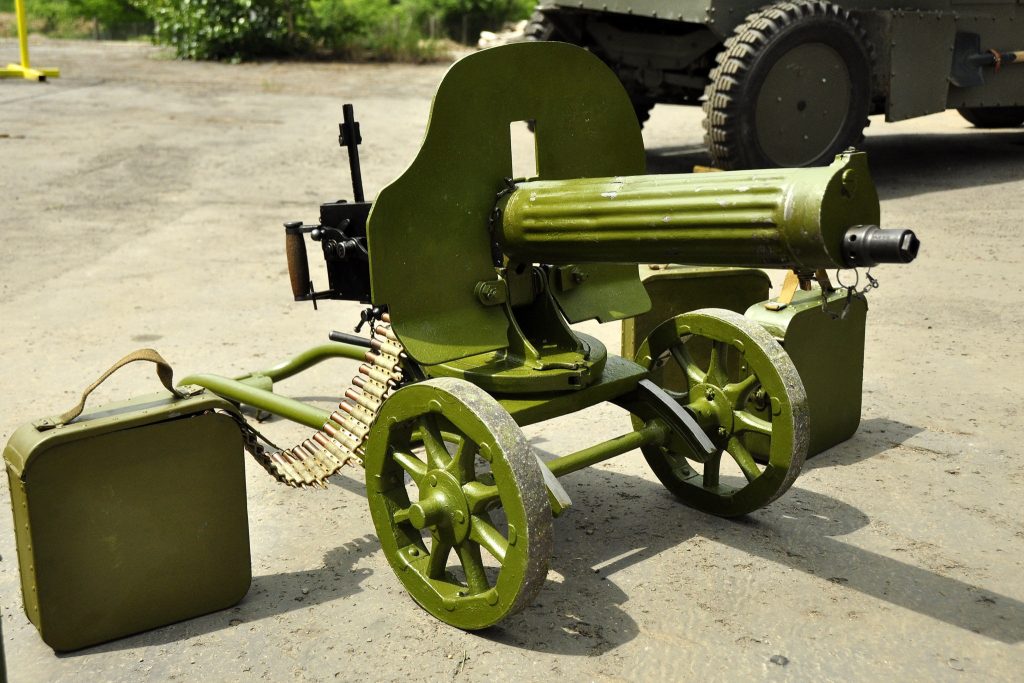
The recoil-operated firing system took advantage of the recoil exerted on the breech block. This moved the bolt and barrel together, with the bolt moving further than the barrel. The action operated the weapon and allowed it to fire full auto.
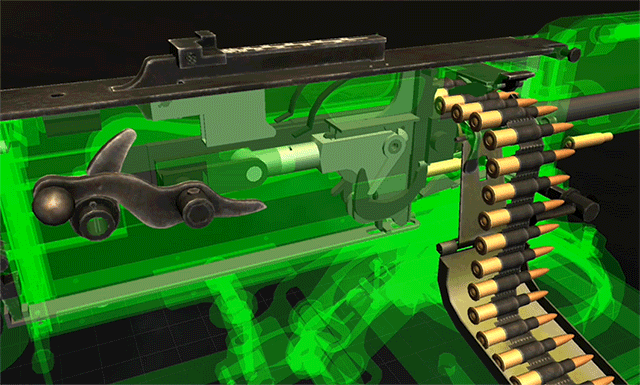
A fully automatic firearm requires a lot of ammunition, and magazines simply weren’t enough. Thus the ammo belt was created. Belt-fed mechanisms allowed the weapon to be fed continuously for hundreds of rounds.
The effectiveness and importance of this gun on its future counterparts cannot be understated. Maxim guns have even been found in service to this day in places like Syria and Ukraine, underscoring the gun’s longevity.
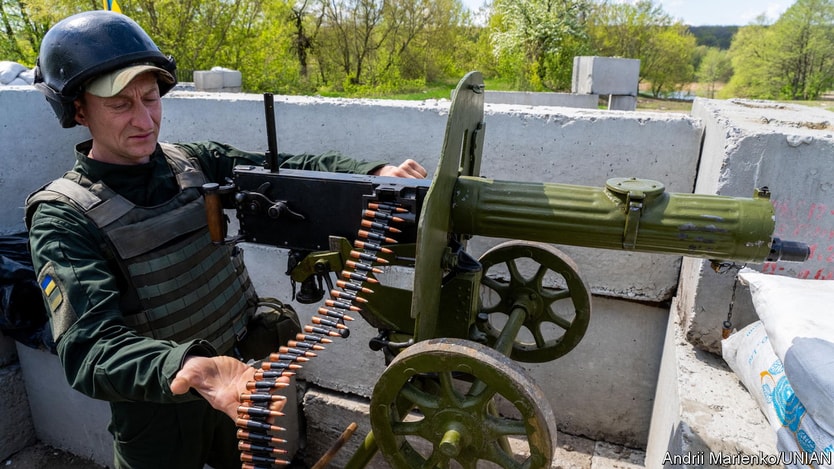
First Semi-Auto Rifle: Mannlicher 1885
Ferdinand von Mannlicher is an awesome name and that awesome-named guy brought us the first semi-auto rifle in 1885 — aptly named Model 1885 self-loading rifle design.

The weapon used recoil operation, which required the bolt to reciprocate slightly with the barrel for a short amount of travel. After this short travel, the bolt unlocks and continues to move rearward and ejects the spent cartridge case.
A top-loading, spring-free gravity magazine drops a fresh round downward. The recoil spring pushes the bolt back forward and a new round into the chamber. He made both full-auto versions and semi-auto variants.

This 1885 design gave off serious retro-futuristic vibes but was doomed from the start. The black powder round it fired was filthy, and this early semi-auto fouled too easily for serious use.
Mannlicher’s model 1885 influenced the operation of the Browning M1919 and M2 machine guns.
First Semi-Auto Pistol: Salvator Dormus Pistol
Some early semi-auto pistols satisfy my aesthetic needs — they look so cool and unique. The first semi-auto pistol, the Salvator Dormus, looks especially cool.
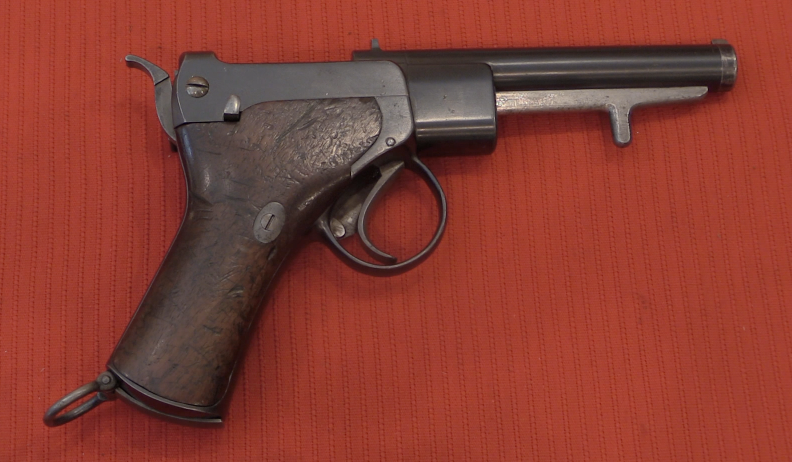
The Maxim gun inspired many arms makers to experiment with automatic and semi-automatic designs, including pistols. Numerous designs began to pop up across Europe, but historians credit the Salvator Dormus pistol as the first real semi-auto pistol.
The Salvator Dormus came to be in 1891, with two members of the aristocracy creating the firearm. Archduke Karl Salvator and Count Georg von Dormus collaborated to develop a semi-automatic pistol.
The weapon uses an internal 5-round magazine fed by en-bloc clips and fired 8mm Dormus ammunition. When the clips emptied, they ejected into the grip, and the grip could contain three of them before needing to be emptied.
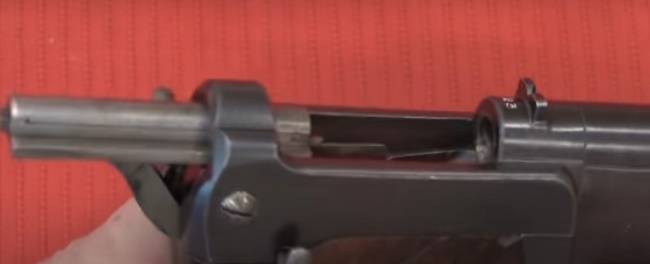
It is a single-action firearm with an exposed hammer and a fascinating safety that completely blocked the hammer from engaging the firing pin and held the bolt open.
The designers used a delayed blowback system that used the shooter’s trigger finger to create a delay for the blowback design. The trigger locks the bolt in place, and it’s not released after firing.
Roughly 20 examples were sent in for the Austrian military trials. However, other designs were considered superior by the time the trials took place, leading to the early demise of the Salvator Dormus.
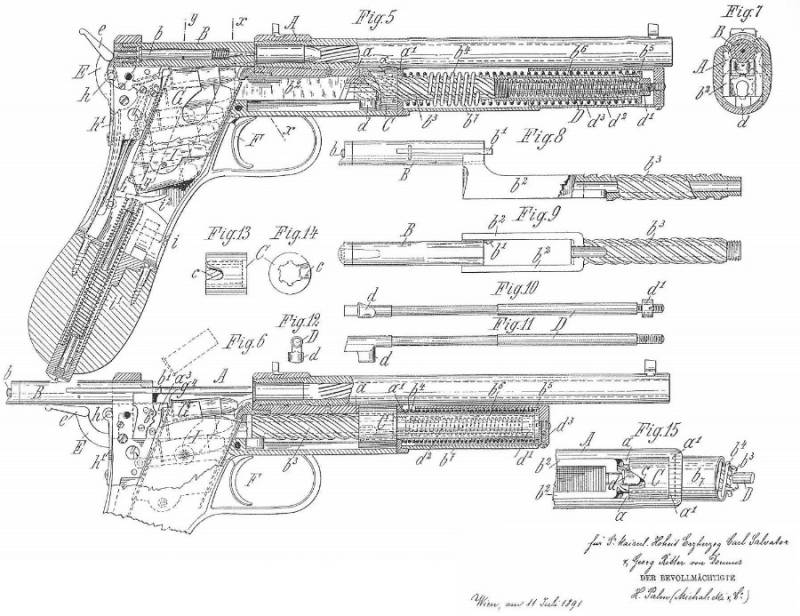
First Submachine Gun: MP 18
Larger belt-fed machine guns were a dominant force during WWI, but they were heavy and required multiple people to operate in many cases. But a shift in warfare tactics showed there was a severe need for portable, rapid-fire weaponry.
The world’s first submachine gun, the MP 18, was the answer.
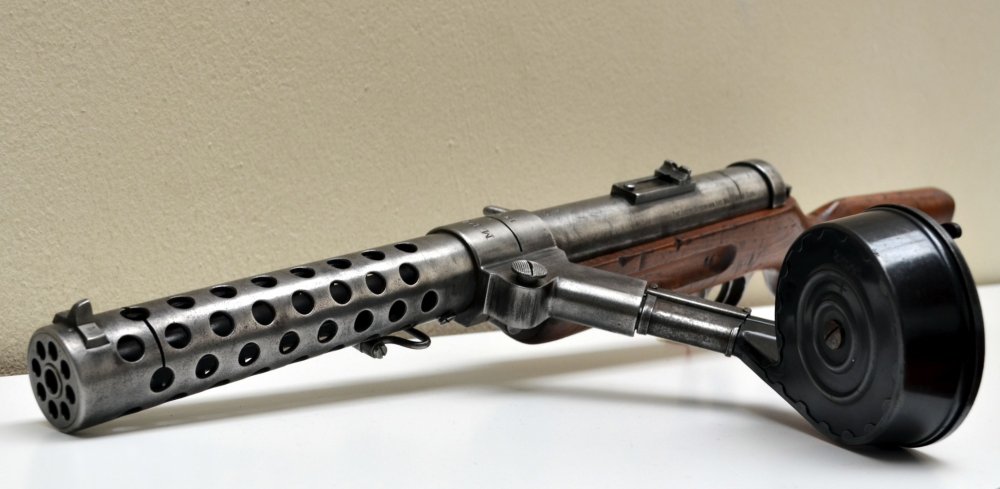
Hugo Schmeisser designed the MP 18 for the Imperial German army. Sturmtruppen carried the weapon into battle; however, it came too late into the war to make a major impact.
Schmeisser’s MP 18 fired the famed 9mm Luger round and used a very simple open bolt, straight blowback operation. The magazine fed from the side, utilizing a 32-round drum magazine, and later used 20 or 30-round stick magazines.
The MP 18 stuck around for a few decades and was in service with a number of forces. Germany even fielded the MP 18 during World War II.
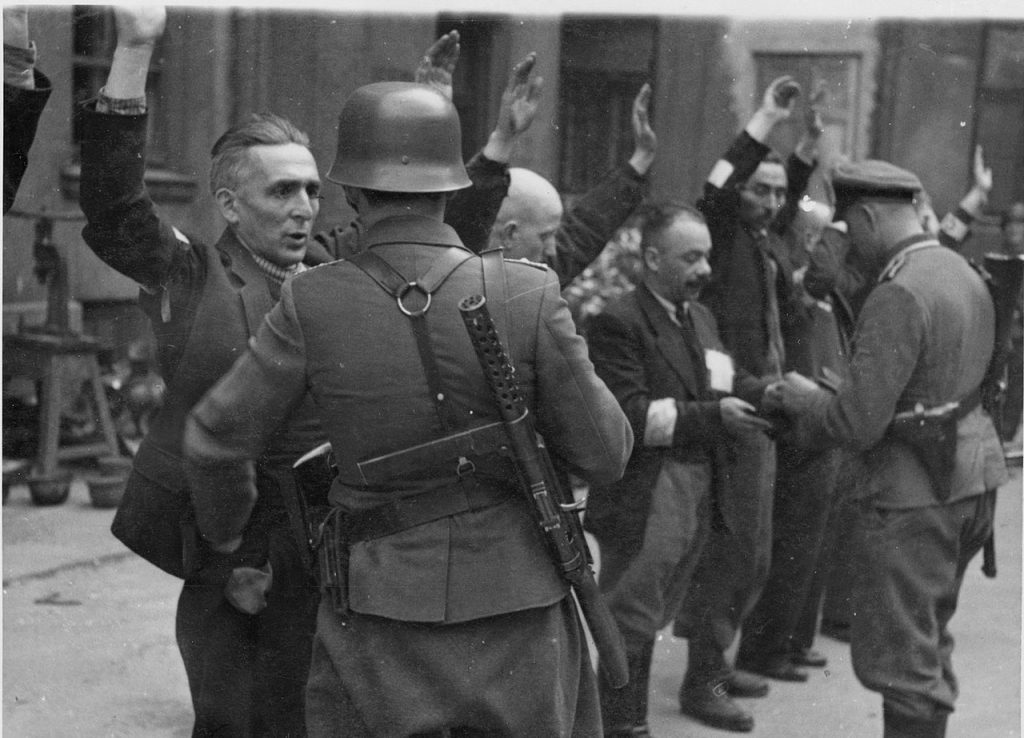
The MP 18 laid the groundwork for most SMGs for about the next 50 years. Open bolt blowback operation became the standard for SMGs during the Second World War. It wasn’t until the MP5 was developed in the 1960s that closed bolt SMGs became popular.
First Assault Rifle: StG 44
Much like World War I, a new set of small arms problems arose during World War II.
The war moved fast, and troops from all countries had SMGs in hand. However, there seemed to be a need for handheld firepower that blended the portability of SMGs with the extended range of infantry rifles.
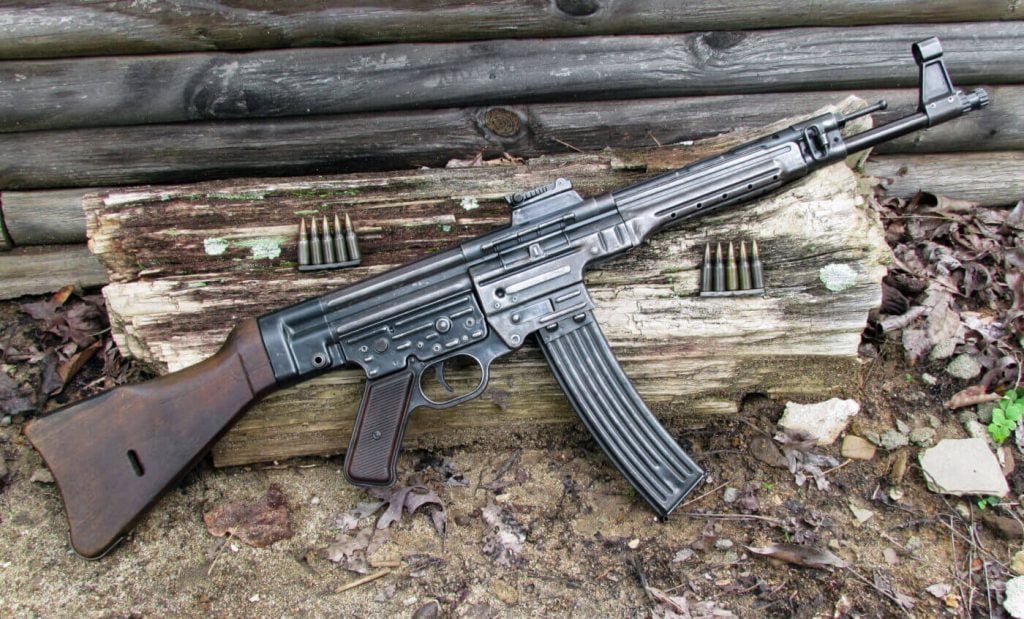
This led to the creation of the world’s first assault rifle in 1943, the StG 44. Like the MP 18, it was too little too late, and the Nazis got stomped into the dirt before the StG 44 could make any real difference. Hugo Schmeisser was once again the lead designer of the weapon.
The StG 44 offered better range, lethality, and controllable automatic capability. To achieve this, it fired an early “intermediate” cartridge that was sized somewhere in between a pistol caliber and full-powered rifle rounds.
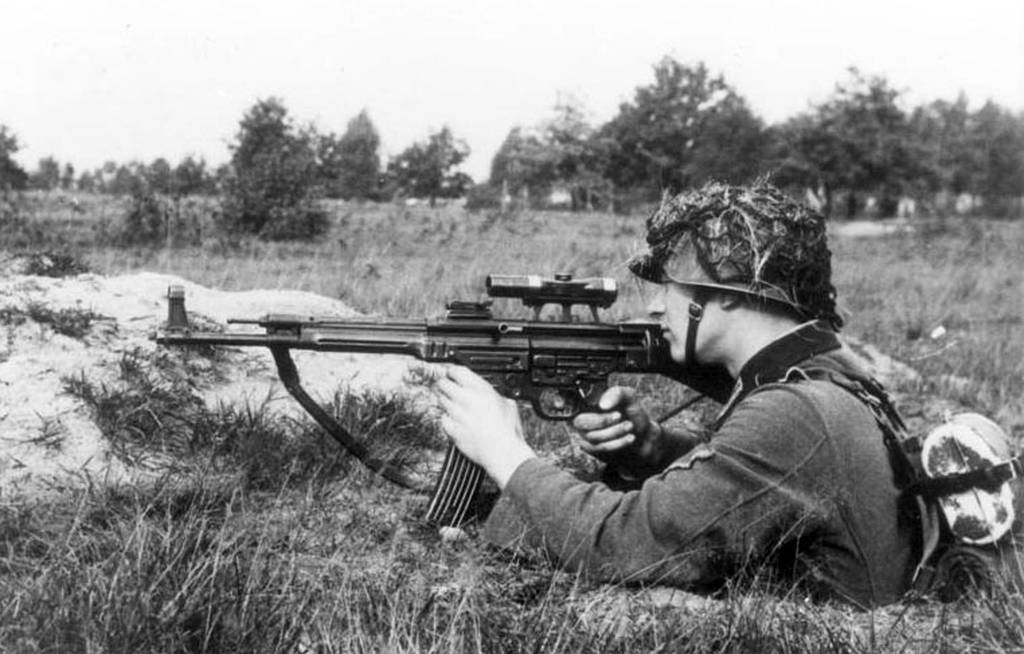
Inside the StG 44 sat a gas-operated, long-stroke gas piston system that fired from a closed bolt. The weapon used a 30-round detachable magazine and could even be fitted with optics.
While both the Brits and Americans found the StG 44 fragile and somewhat unreliable, the Americans commented that its accuracy and handling were excellent.
The StG 44 was ahead of its time and later influenced all modern arms design in one way or another. Design cues from the StG44 are clearly present in guns like the world-renowned AK-47.
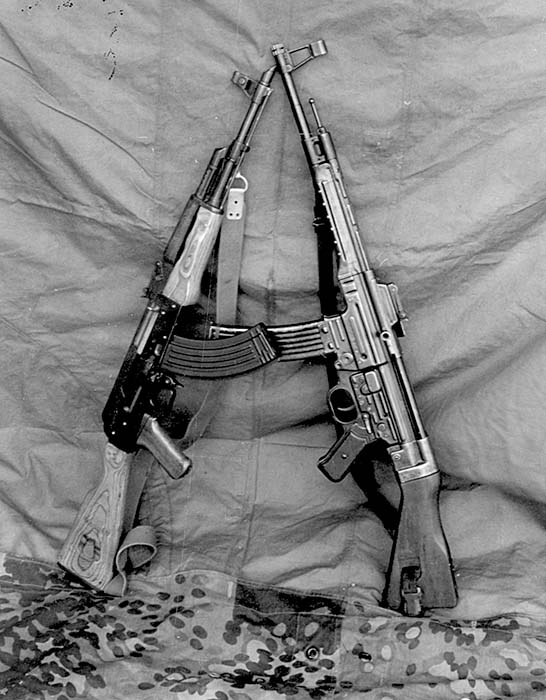
Its capability was never in question and has even been spotted in the hands of fighters in Syria in recent years.
Final Thoughts
Historic firearms are fascinating — but often times the very first gun of its kind is buried in favor of the first “successful” gun of its kind.
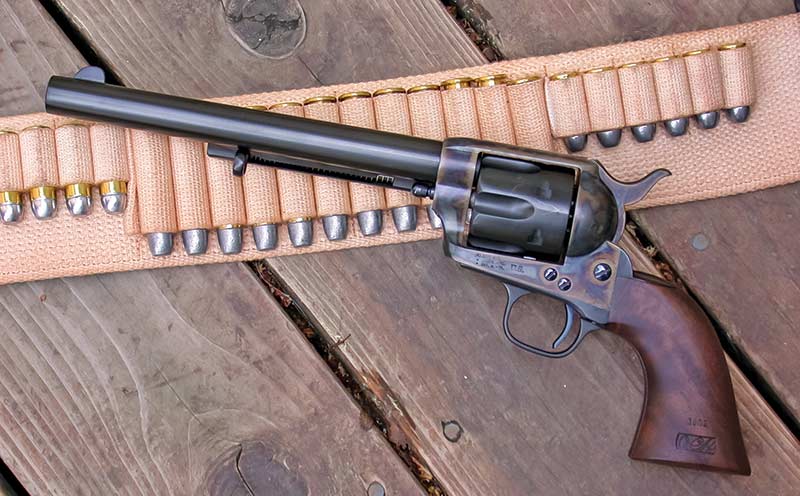
Looking at true “firsts” is interesting, even if they were considered failures because they paved the way for other firearms to follow.
Are there any firearm firsts that we missed that you want to see? Let us know in the comments below! Interested in getting your hands on a historical gun but don’t want to break into a museum? Check out our article on the Best Historical Guns You Can Still Buy.



